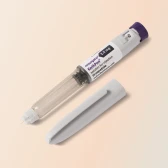Introduction
Late-onset testosterone deficiency (TD) is a condition that impacts up to 30% of men depending on diagnostic criteria, but it often goes unnoticed and untreated for years. Recent studies emphasise the numerous benefits of testosterone replacement therapy (TRT), including improvements in libido, mood, bone-mineral density, and lean body mass. Despite these benefits, many men delay treatment due to stigma, lack of awareness, or misinformation. This study explored the personal experiences of men with TD, focusing on their access to TRT and its impact on their lives.
Key Findings
The study revealed critical insights into the challenges faced by men with TD and the transformative effects of TRT:
- Delayed treatment is common: A striking 86% of men delayed seeking care for over a year, with 26% experiencing symptoms for more than five years before pursuing treatment.
- Older men wait longer: Men over 50 were 1.79 times more likely to delay seeking treatment compared to younger individuals. This highlights the need for better outreach and education, especially for older demographics.
- TRT is highly effective: The majority (86%) of participants reported that TRT was very effective, with those on longer-term therapy being 2.6 times more likely to rate it as highly beneficial compared to newer users, emphasising the cumulative benefits of consistent therapy.
- Motivations for treatment: Improving personal relationships (79%) and enhancing physical appearance (53%) were the most common reasons for seeking TRT. This suggests that while physical symptoms are a key driver, emotional and interpersonal factors also play a critical role in men’s decision-making.
- Sources of information: Most men (81%) relied on online sources for education about TD and TRT, while only 18% felt comfortable discussing hormonal health with their peers, , indicating a persistent stigma surrounding the topic.
- Patient priorities in consultations: Diagnosis (77%), learning about treatment options (64%), and understanding potential side effects (51%) were the top expectations during medical consultations. These insights highlight the need for healthcare providers to address patient concerns comprehensively.
- Quality-of-life improvements: Patients reported significant benefits, including enhanced overall quality of life (75%), improved mental wellbeing (71%), boosted self-esteem and confidence (69%), and a more positive appearance (61%). These findings underscore the far-reaching positive effects of TRT beyond managing symptoms.
- Common side effects: The most frequently reported side effects included acne (24%), testicular shrinkage (24%), and nipple itchiness or gynaecomastia (19%). Despite these side effects, the majority of participants found the benefits of TRT to outweigh the drawbacks.
Process
A cohort of 905 men already undergoing treatment for TD completed a structured 52-item questionnaire via Qualtrics, which focused on their experiences with TD, their use of TRT, and the barriers they faced before seeking care.
Significant Insights
The research underscores the need for improved public health communication about TD and TRT. Despite the transformative effects of treatment, many men wait years before seeking help, often relying on the internet for information instead of medical professionals. Stigma surrounding hormonal health exacerbates these delays, as less than one in five participants felt comfortable discussing their condition with peers.The study also highlighted that men’s motivations for treatment often go beyond physical symptoms, emphasising the importance of improving relationships, mental health, and overall confidence. Healthcare providers must adopt a holistic approach that addresses both the medical and emotional aspects of TD and its treatment.
Real-World Impact (Practical Implications)
This study has profound implications for the healthcare system and men’s health advocacy where there is a need for widespread educational campaigns to normalise discussions around TD and hormonal health. By reducing stigma, streamlining access to care, and improving the availability of reliable resources, more men can be empowered to seek timely diagnosis and treatment.
Healthcare providers should also create supportive environments where patients feel comfortable discussing their concerns and expectations. Better consultation practices can help patients make informed decisions about TRT, leading to more positive outcomes and improved quality of life.
Conclusion
Testosterone deficiency is a common but often misunderstood condition, with many men delaying treatment despite significant symptoms. This study highlights the transformative potential of TRT in improving quality of life, mental health, and self-esteem. By addressing barriers such as stigma and lack of awareness, we can ensure equitable and timely access to care for men affected by TD, ultimately helping them lead healthier, more confident lives.













